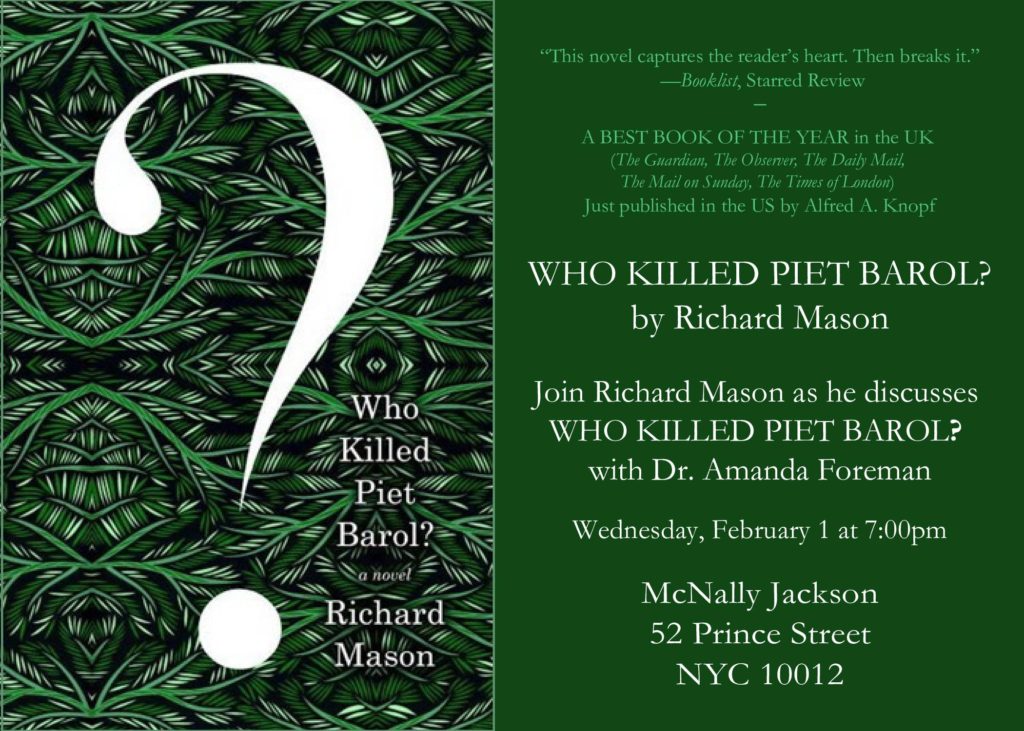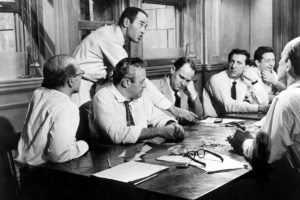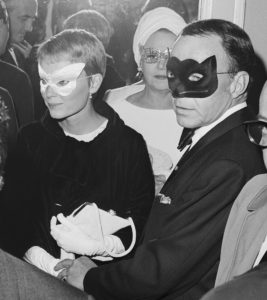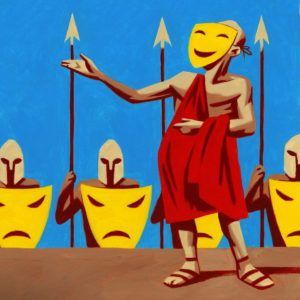

A scene from the 1957 version of ‘12 Angry Men’: From left, John Fiedler, Lee J. Cobb, Henry Fonda, E.G. Marshall, Jack Klugman, Edward Binns and George Voskovec. PHOTO: EVERETT COLLECTION
On jury duty this month, I’ve had plenty of time to reflect on the meaning of the 1957 film “12 Angry Men.” Law schools still use the 60-year-old courtroom drama about a biased and easily swayed jury as a teaching tool. The question remains: Does the movie prove or disprove Mark Twain’s characterization of trial by jury as “the most ingenious and infallible agency for defeating justice that human wisdom could contrive”?
Jurors are all too human, something the ancient Greeks tried to mitigate by allowing some jury panels to have 1,000 or more citizens at a time. To prevent malicious plots and ensure a broad mix of people, every juror received half a drachma a day—enough to feed a poor man and his family. But such precautions failed to save Socrates from his enemies in 399 B.C. An Athenian jury, egged on by an anti-Socrates faction, convicted him of “impiety” and “moral corruption of the young” by a majority of 280-221. Continue reading…

On Dec. 31, 1947, a celebrant at a New York nightclub overindulged. PHOTO: BETTMANN ARCHIVE/GETTY IMAGES
New Year’s Eve partygoers know three things: Somewhere fireworks are going off, somewhere a better party is going on, and somewhere there’s another serving of alcohol. After that, there’s the inevitable crashing headache in the morning. Dorothy Parker, one of the great tipplers of the 20th century, had it right: “A hangover is the wrath of grapes.”
The aforesaid grapes appear to have been in a nonstop rage from at least 7000 B.C., when the Chinese were crushing them in a recipe that included fermented rice and honey. Since then, the world’s greatest minds, sober and not, have been searching for a hangover cure, or at the very least a negotiated truce. Continue reading…

ILLUSTRATION: THOMAS FUCHS
Americans have their raucous Frosty; the British, their beloved children’s book about a flying snowman; and Disney, its goofy Olaf from “Frozen.”
Like Wonder Bread and Miracle Whip, these friendly mass-market snowmen only vaguely resemble their many more subtle predecessors. It’s lovely to bring winter cheer to children, of course, but snowmen have often served more serious aims.
Some of the world’s most famous people have built notable snowmen—from Prince Albert, who built a 12-foot snowman for his wife, Queen Victoria, to Michelangelo, who made one for the Medicis. In 1494, the artist’s patron was Piero di Lorenzo de’ Medici, known as Piero the Unfortunate. This Medici prince was a pale imitation of his famous father—weak where Lorenzo was strong, spoiled where he was generous. Having invited his father’s former protégé to live and work at the palace, Piero gave Michelangelo only one commission: to build a snowman in the courtyard. Continue reading…

‘A World on Fire: Britain’s Crucial Role in the American Civil War’ by Amanda Foreman. Random House. 958 pp. $35. (Random House).
A World on Fire by American historian Amanda Foreman is a nice, big fat book for summer reading.
It’s a tale of affection, rivalry, suspicion, hostility and at times outright love set against the backdrop of the American Civil War, but really it’s about the relationship between Britain and the United States.
Foreman writes with authority, humour and a taste for detail, introducing us to the many Britons who gave their support, and sometimes their lives, to both North and South. Continue reading…

Frank Sinatra and his wife, actress Mia Farrow, as they arrive at Truman Capote’s Black and White Ball.
Last week marked the 50th anniversary of the most famous (or infamous) Hollywood-arts-money-politics-celebrity mash-up of the 20th century. What made Truman Capote’s Black and White Ball at New York’s Plaza Hotel in 1966 so special was the way he managed to bring together power players from every section of American society, from McGeorge Bundy (who had recently left the post of White House national security adviser) to Frank Sinatra. Some say that the ball inaugurated the era of the celebrity A-list. Continue reading…
For a festival that celebrates amity, thankfulness and American values, Thanksgiving generates a lot of arguments, perhaps none more contentious than the issue of stuffing.
The disputes begin with the name, because some people refer to stuffing as “dressing.” Also, some insist that stuffing is only stuffing if it’s from inside the bird, while others can only abide cooking it separately and serving it as a side dish. Continue reading…

From left, Presidential Candidate Barbie (2004), Registered Nurse Barbie (1961) and Career Girl Barbie (1963).
Since her arrival in 1959, Barbie has evolved into an international phenomenon with a grip on modern culture. Her success testifies to the genius of the doll’s creator, Ruth Handler—born 100 years ago this week.
Some social commentators call Barbie, with her strikingly varied career choices, an avatar for women’s liberation. Others call her a tool of patriarchal oppression, beginning with her anatomy—which, according to one scientific analysis, would force her to walk on all fours if she were alive, due to her tiny feet and top-heavy body. Continue reading…

ILLUSTRATION: THOMAS FUCHS
After a rebellion erupted in 2011 against Syrian President Bashar al-Assad, the city of Aleppo found itself split in two. Today, with help from Russia and Iran, Mr. Assad’s regime is laying waste to rebel-held parts of Aleppo. Mosques, museums, hospitals and schools there now lie in ruins. The image of a stunned, wounded little boy covered in soot and blood held the world’s attention briefly in August, as the siege went on. Many classrooms have moved underground, but the fact that schools continue to operate at all in Aleppo testifies to the determination of parents and educators to keep alive both civic values and culture.
Sieges have often drawn out such higher ideals and achievements, even as they show humanity at its brutal worst. Continue reading…





